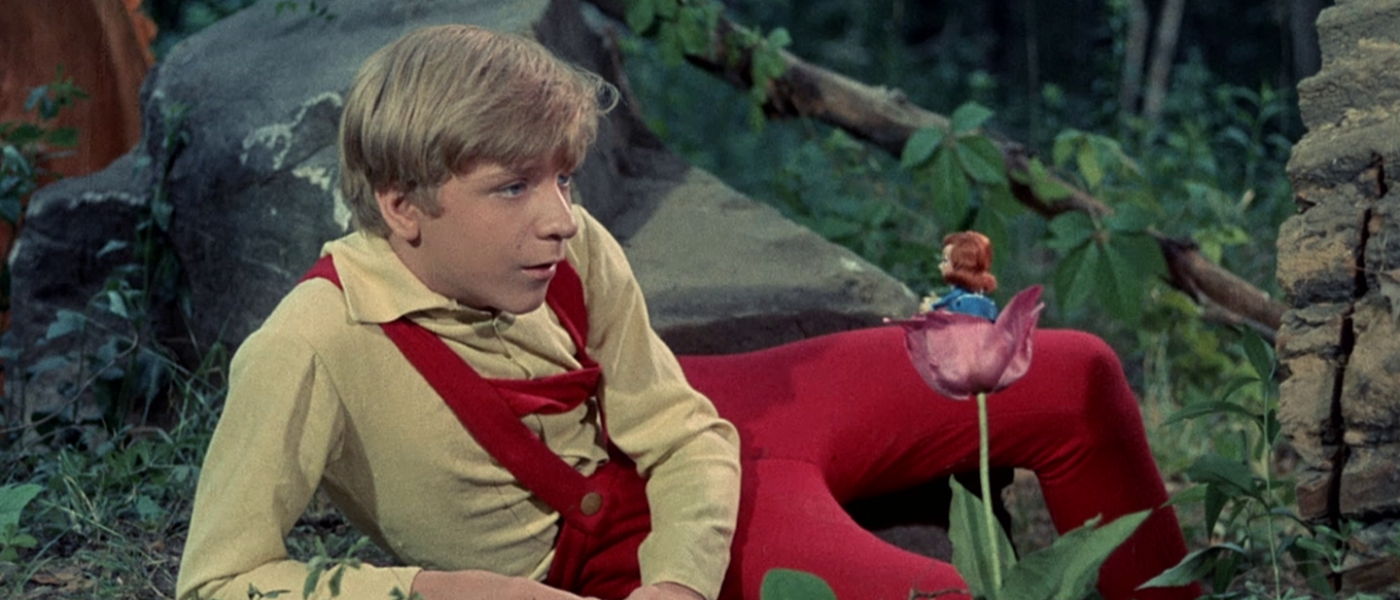A Quality Release Can’t Save Rankin/Bass’s Frustrating Fantasy Musical
DIRECTED BY JULES BASS AND TADAHITO MOCHINAGA/1966
BLU-RAY STREET DATE: MAY 18, 2021/KL STUDIO CLASSICS
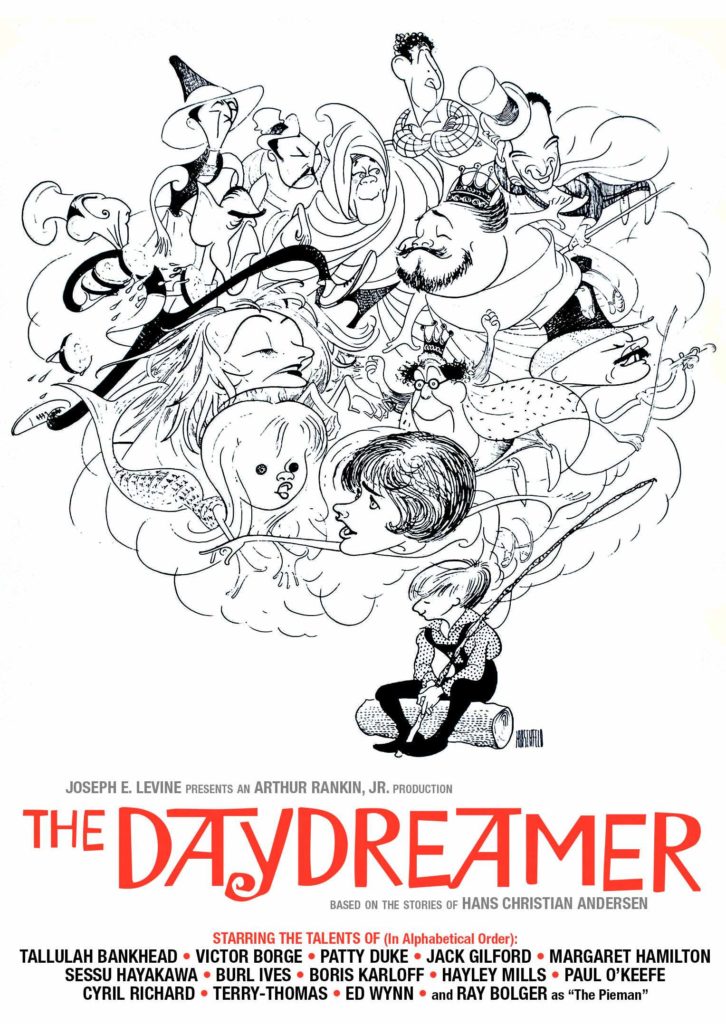
The Daydreamer is a rarely discussed film, even among fans of the works of Rankin/Bass. After viewing, it becomes apparent why.
The second feature from Rankin/Bass (then known as Videocraft) and the first of three features produced with Embassy Pictures, 1966’s The Daydreamer is a lackluster start to their partnership. A musical fantasy, the film is tells the story of a young Hans Christian Andersen and the fantasies that will inform his fairy tales, alternating between live-action for the waking Andersen and stop-motion animation when he’s lost in the world of fantasy. Despite some enjoyable moments and my own admitted affection for the studio’s work, The Daydreamer is marred by a poor story, weak animation, and a lackluster soundtrack, all culminating in a disappointing film.
The story of The Daydreamer follows a young Hans Christian Andersen, referred to throughout the film as Chris. The son of a poor shoemaker, Chris is bored by his school lessons and frustrated by his overprotective father, finding comfort in the realm of fantasy as he yearns for an easy, carefree life. One night, Chris is visited by the ghostly figure of the Sandman, who tells the boy of an idyllic place where he may find his sought after carefree life; the Garden of Paradise.
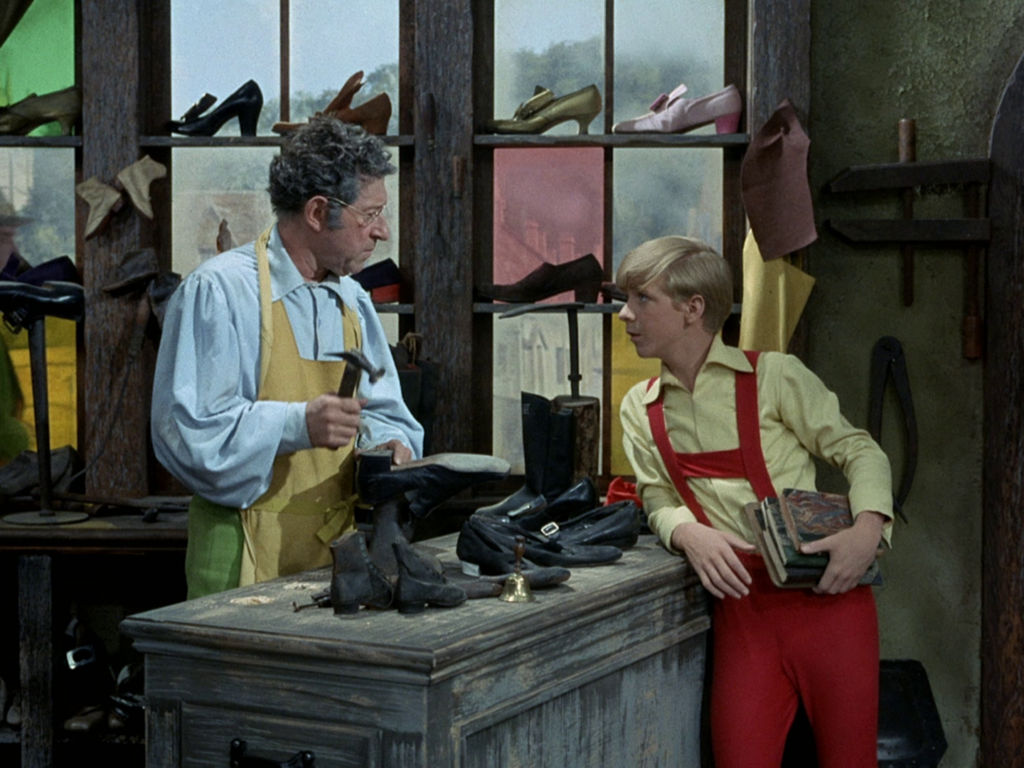
Thrilled, Chris packs his bags and rushes off into the night, determined to find the Garden of Paradise, later pursued by his worried father. Along the way, Chris frequently finds himself caught up in various fantasies, daydreams that will serve as the basis for many of his stories, presented in stop-motion “Animagic”. These stories are primarily based on “The Little Mermaid”, “The Emperor’s New Clothes”, “Thumbelina”, and – of course – “The Garden of Paradise”, but include a number of smaller references to other Andersen stories like “The Ugly Duckling” and “Little Claus and Big Claus.”
Despite the good concept and a solid opening, the film’s narrative begins to fall apart once Chris leaves home. The overarching live-action narrative is largely uninteresting. Instead of being used to convey any real narrative arc for Chris or enhance the animated segments, these live-action sequences seem to exist purely to connect the fantasies. At most, the live-action segments will establish small elements that will crop up in Chris’s daydreams; however these are almost exclusively minor aesthetic elements with no real depth to them.
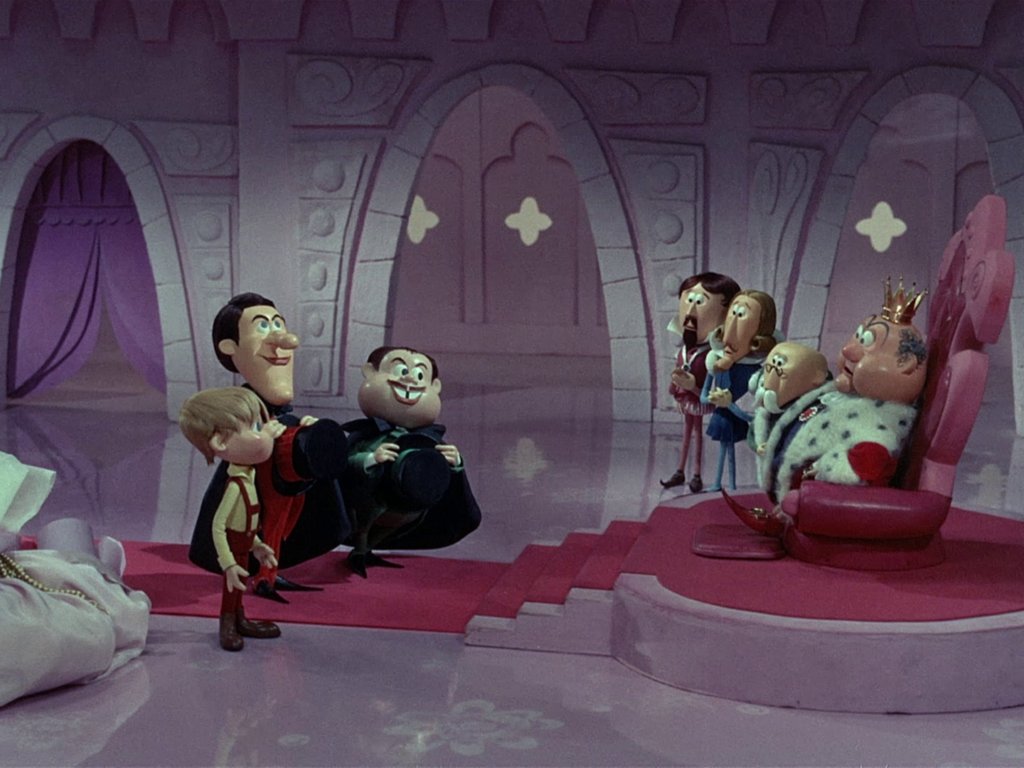
The animated segments have their enjoyable moments, but are lacking as well. While “The Little Mermaid” and “The Garden of Paradise” are quite enjoyable, “The Emperor’s New Clothes” and “Thumbelina” are overlong and drag quite a bit. However, the biggest issue with them narratively is their isolation from not only the live-action segments, but also one another. This lack of a through line between the animated segments adds to the film’s largest issue, the lack of any substantial feeling of narrative progression. If the film dedicated less time to the live-action sequences it might make for an effective anthology of animated stories, but the pure quantity of live-action filler leaves the film in an awkward, unsatisfying middle ground.
Visually, The Daydreamer also has substantial issues. While the live-action sequences are an enjoyably vibrant, amusement park rendition of 19th century Denmark, the stop-motion animation is far from the best work produced at MOM Production. It’s not a substantial step up from the work that they had been producing for television, with the typical jerky, slightly awkward movement. While this is expected, and in some ways more a feature than an issue for fans of their work, it’s a bit disappointing to see it in a theatrical work. Another noticeable issue is the absence of variant head sculpts for the puppet characters that would allow for more extreme reactions, something that would add a great deal of charm to other projects MOM would produce for Rankin/Bass.
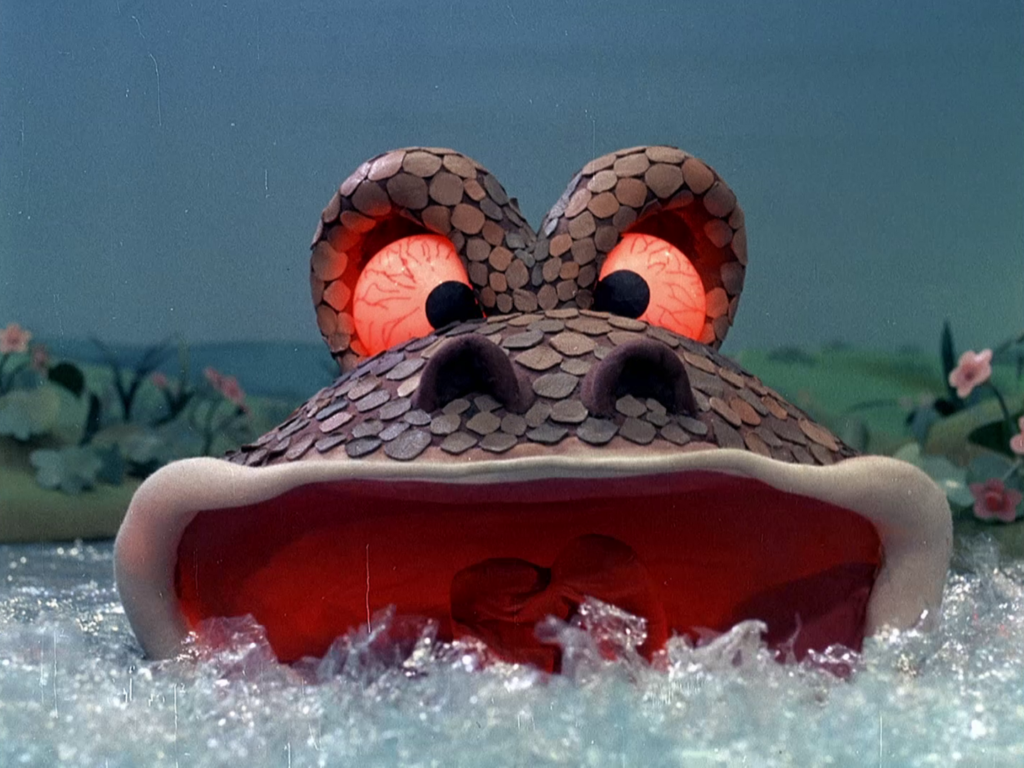
There are also two sequences of remarkably poor animation, even by the standards of the studio. The very first Animagic sequence, when Chris is pulled into the ocean by a roiling sea, features some jerky, awkwardly times animated water created using cling wrap that – while admirable – is more distractingly bad than charming. The other sequence is much more egregious in its lack of quality. As Chris and Thumbelina walk together during the song “Happy Guy”, in the long shots the timing is completely erratic, character’s awkwardly jerking along without a modicum of fluidity for nearly the entire song. These two sequences are compounded by the usual issues with animation produced by MOM Production’s animation, resulting in one of their weaker works, which only stands in sharper contrast against the much better work they created for 1967’s Mad Monster Party.
That being said, I would be remiss if I didn’t point out the elements of the animation which I did quite like. Sets are impressive and varied, in particular the undersea sets used in “The Little Mermaid” and the moody underground cavern in “Thumbelina”. Some more exceptional sequences include the Little Mermaid approaching the lair of the sea-witch as she’s accosted by all manner of hostile aquatic life, Chris’s confrontation with a charmingly expressive giant frog in “Thumbelina”, and the finale at the Garden of Paradise. Sequences like these are more the exception than the rule, standing out as enjoyable, well made scenes in an otherwise messy film.
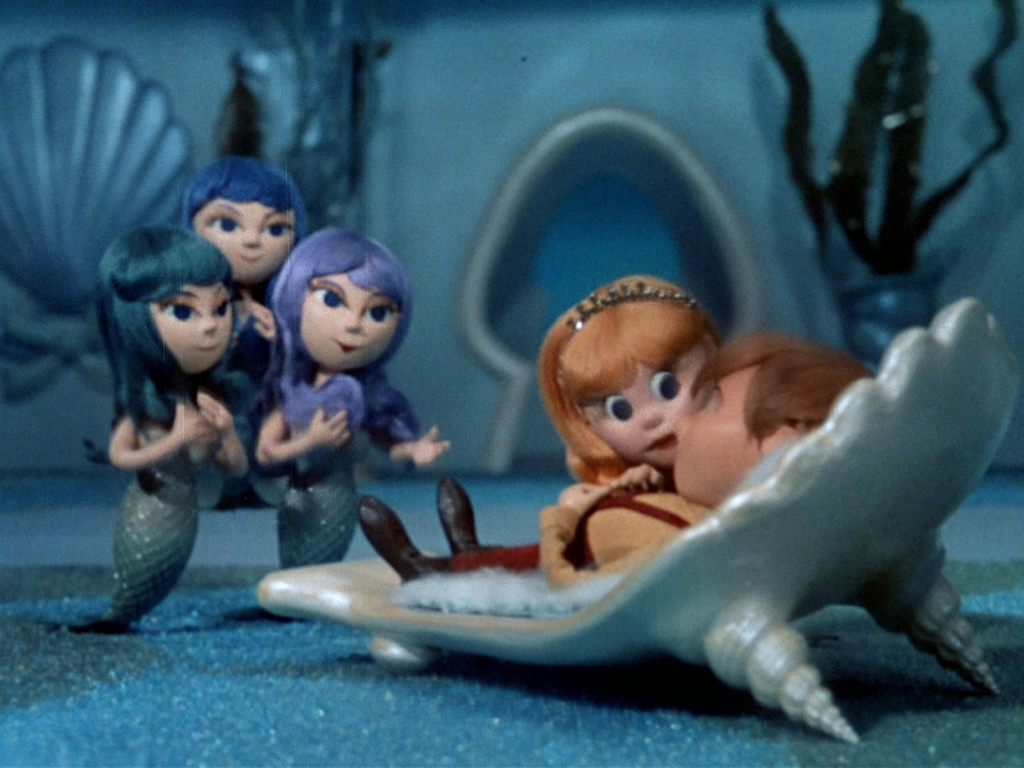
The musical numbers aren’t quite bad, but overall don’t leave a substantial impression. There are some stand outs, the title track “Daydreamer” and the Little Mermaid’s song “Wishes and Teardrops”, but the rest are largely just pleasant fluff. Some, like “Luck to Sell”, are more actively frustrating. Despite a strong start and charming if rough vocals, it never progresses with any additional hooks or more complex instrumentation. It’s perhaps the best representation of my feelings on the film; a strong, charming start that doesn’t really go anywhere, emblematic of the sense of missed potential that permeates the film.
While I can’t recommend The Daydreamer to a general audience, I think stop-motion fans will find it enjoyable and that Rankin/Bass fans should definitely grab a copy of Kino Lorber and Scorpion Releasing’s new Blu-Ray or DVD release. The restoration work is exceptional, as expected, retaining the grain of the original film while adding a clarity and vibrancy to the visuals not available on previous releases. While not heavy on extra features, the additional trailers are a fun distraction and the included audio commentary with Rankin/Bass Historian and Author Rick Goldschmidt and Film Historian Lee Gambin is an enjoyable, conversational experience that offers a bit of insight into the production of The Daydreamer.


